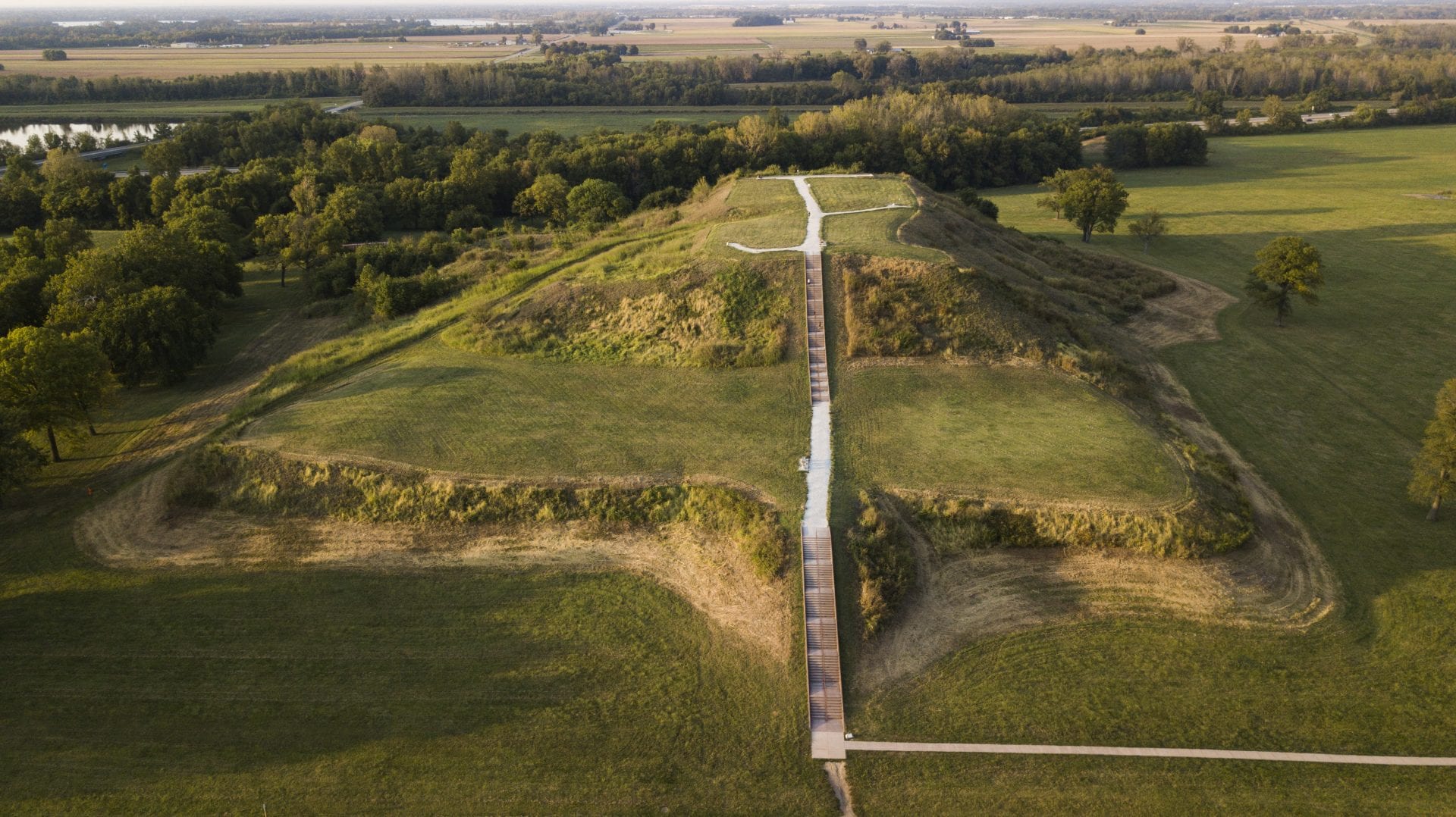New insights have been revealed about Monks Mound, a giant earthwork at the ancient city of Cahokia.
Cahokia was the largest urban settlement to develop from the Mississippian culture, a mound-building pre-Columbian civilisation that developed in the Midwestern, Eastern, and South-eastern United States. Archaeological evidence suggests that the city was founded around AD 1050, reaching an apex of 20,000 inhabitants until it was abandoned during the AD 1400’s.
The builders constructed 120 earthen mounds, with the largest being “Monks Mound” (named after a community of Trappist monks who settled on the mound), a 290-metre-long platform consisting of raised terraces, surrounded on its north, south, east, and west by large rectangular open areas.
These areas were thought to serve for communal gatherings, however, a new paleoenvironmental analyses of the north plaza suggests that it was almost always underwater, calling into question earlier interpretations of the north plaza’s role in Cahokian society.
Cahokia was built in a flood plain below the confluence of the Mississippi and Illinois rivers. The site would regularly become infiltrated with flowing water when two creeks running through the area could swell from heavy rains.
Researchers conducted test excavations and extracted sediment cores around the four mounds that define the north plaza. They also took soil samples less than 5 kilometres from the plaza and analysed stable carbon isotopes in these modern soils to determine isotope differences between wetlands, seasonal wetlands and prairie environments.
By comparing these with carbon isotopes from ancient soils chronologically associated with the mounds, this also revealed what types of plants had grown there in the past.
“Water was important to the people of Cahokia for a number of reasons. They had a whole agricultural suite of wetland plants that they domesticated and relied on as food,” said Caitlin Rankin from the Illinois State Archaeological Survey.
How the north plaza was used remains a mystery, but the results show that the area remained wet throughout the year with some seasonal dryness. Many of the cosmological beliefs of Indigenous groups include creation stories that involve complex interactions with sky, water and earth.
“At Cahokia, you have these mounds emerging from this watery sphere, and so, that was a significant feature that probably resonated with their creation stories and their myths and their worldview,” said Rankin.
Header Image Credit : MattGush – iStock







